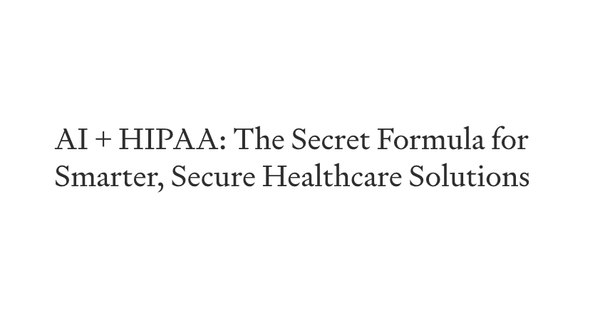Think You’re Safe? The Alarming Rise of Medical Errors You Need to Know About
Understanding Medical Errors and Malpractice: A Patient’s Guide to Staying Safe and Seeking Justice
Table of Content
When it comes to your health, you place your trust in doctors and healthcare professionals to give you the best care possible. But what happens when something goes wrong? Mistakes like misdiagnoses, surgical errors, or incorrect medications can have serious effects—not just on your health but also on your peace of mind and finances.
As a doctor, I know how confusing and frustrating these situations can be. The good news? You don’t have to face them alone. This guide is here to break things down in simple terms. You’ll learn what medical errors and malpractice are, how to spot the warning signs, and what steps to take to protect yourself or your loved ones.
By staying informed and asking the right questions, you can make sure your voice is heard and your rights are respected. Let’s walk through these important topics together, so you can feel empowered and in control of your healthcare journey.
Medical Errors: A Global Concern
Imagine this: a routine surgery goes wrong because of a simple miscommunication, or a patient is misdiagnosed, leading to years of unnecessary treatments. These aren't isolated incidents. Studies suggest that medical errors are among the leading causes of preventable harm worldwide.
In the U.S. alone, Johns Hopkins estimates that medical errors account for more than 250,000 deaths annually. Germany, Canada, and the UK also report significant issues, albeit with different healthcare challenges and safeguards.
Medical errors refer to preventable mistakes in diagnosis, treatment, aftercare, or health management. They can happen in bustling hospitals, local clinics, or even during routine check-ups.
While not all errors lead to serious harm, they often leave patients confused, frustrated, and anxious.
Real Cases: What Can Go Wrong
- USA: A misdiagnosed heart attack case in Texas led to delayed treatment, leaving the patient with lifelong complications. The hospital admitted to understaffing as the primary cause.
- Germany: A patient in Munich suffered organ damage after being prescribed the wrong medication. Investigations revealed a mix-up in the hospital's digital records.
- Canada: In Toronto, a surgeon left a surgical tool inside a patient, causing severe infections. The hospital revised its procedural checklist after the incident.
- UK: A woman in London was given a chemotherapy drug meant for another patient. A lack of double-checking protocols contributed to the error.
What’s the Difference Between Medical Errors and Malpractice?
While both terms are interconnected, they are not the same:
- Medical Error: A mistake that occurs during treatment but may not necessarily involve negligence. For instance, prescribing a wrong dosage due to unclear handwriting.
- Medical Malpractice: When a healthcare professional fails to meet the standard of care, causing harm to the patient. This includes deliberate negligence or consistent oversight.
Key Example: If a doctor misses a cancer diagnosis because the lab results were ambiguous, it’s an error. If the same doctor overlooks obvious symptoms and fails to order necessary tests, it may constitute malpractice.
Why Do These Errors Happen?
Healthcare is a high-pressure field, but certain patterns emerge in error-prone systems:
- Miscommunication: In Germany, language barriers in multilingual cities like Berlin can lead to misinterpreted medical histories.
- Fatigue: Overworked doctors in the UK’s NHS system often face burnout, increasing the likelihood of mistakes.
- System Failures: Canadian hospitals with outdated electronic medical record (EMR) systems report more prescription errors.
- Understaffing: In the U.S., rural hospitals frequently lack enough specialists, resulting in delayed or improper care.
How to Protect Yourself as a Patient
You can take proactive steps to minimize risks and safeguard your health:
- Be Prepared: Before appointments, write down your symptoms, medical history, and questions.
- Double-Check Medications: Inquire about side effects and proper usage of any prescribed drug.
- Second Opinions Matter: If unsure, consult another specialist. In countries like Canada and the UK, second opinions are often covered by public healthcare.
- Ask for Clarity: Don’t hesitate to request simpler explanations or more details about procedures.
- Stay Organized: Maintain a folder with your test results, prescriptions, and consultation notes.
What to Do If You Suspect an Error or Malpractice
If you believe something went wrong, acting swiftly can make a significant difference:
- Document the Incident: Note dates, symptoms, and conversations.
- Speak Up: Bring your concerns to the hospital's patient advocate or a medical board. In Germany and Canada, ombudsman services offer mediation.
- Seek Expert Opinions: Consult another doctor to confirm your suspicions.
- Legal Advice: In the U.S. or UK, lawyers specializing in medical malpractice can guide you on your rights and options.
Example Case: A patient in Germany won compensation after proving that a delayed diagnosis of appendicitis led to severe complications. Detailed medical records and a second opinion played a crucial role in their claim.
Navigating the Legal Process
If malpractice seems evident, the legal process involves:
- Evidence Collection: Secure all medical records and documents.
- Consulting Experts: A medical expert will review your case to establish negligence.
- Filing a Claim: Work with a lawyer to submit a formal lawsuit. Be mindful of time limits, which vary by country (e.g., three years in the UK, two in Canada).
- Resolution: Cases often end in settlements but may go to court if necessary.

Frequently Asked Questions (FAQs)
1. What’s the difference between a medical error and malpractice?
Medical errors are mistakes that happen during your care, like getting the wrong medication or a missed diagnosis. Malpractice, on the other hand, happens when a healthcare provider's negligence leads to harm. Not all errors count as malpractice, but both can seriously impact your health and well-being.
2. What four things must be proven in a medical malpractice case?
To win a malpractice case, you’ll need to prove:
- Duty: The healthcare provider had a responsibility to treat you.
- Breach: They failed to meet the expected standard of care.
- Causation: Their mistake directly caused harm.
- Damages: You suffered physical, emotional, or financial harm as a result.
3. What are the most common errors that lead to malpractice lawsuits?
The top culprits include:
- Misdiagnosis or delayed diagnosis.
- Medication errors, like prescribing the wrong drug.
- Surgical mistakes, such as operating on the wrong site.
- Birth injuries caused by improper care during delivery.
4. Who is responsible for preventing medication errors?
It’s a shared responsibility. Doctors must prescribe correctly, pharmacists must check dosages, and nurses must administer medications accurately. Patients can help too—ask questions and double-check your prescriptions!
5. How can I protect myself from medical errors?
- Be proactive: Ask your doctor about your diagnosis and treatment options.
- Keep copies of your medical records.
- Seek second opinions if something doesn’t feel right.
- Don’t hesitate to speak up if you notice anything unusual.
6. Can I file a lawsuit for a medical error if I wasn’t harmed?
Generally, no. Most malpractice claims require you to prove that the error caused harm. However, you can still report the incident to improve the healthcare system and protect others.
7. Is suing for malpractice expensive?
It doesn’t have to be! Many lawyers work on a contingency basis, which means they only get paid if you win your case. In countries like Canada and Germany, patient advocacy groups may even offer free legal advice to help you get started.
8. What’s the hardest part to prove in a malpractice case?
The toughest part is often causation—proving that the doctor’s mistake directly caused your harm. This usually requires expert testimony and detailed evidence, so keeping accurate records is essential.
9. How long do I have to file a malpractice claim?
The time frame, or statute of limitations, varies by country and state. For example:
- UK: Usually three years from the date of the incident.
- Canada: Around two years in most provinces.
- USA: Between one and three years, depending on the state.
Check with a lawyer to ensure you don’t miss the deadline.
Conclusion: Advocating for Your Health
Your health is invaluable, and being informed is your strongest defense. By understanding how medical errors occur and what steps to take, you can advocate for yourself and others.
If something feels off, trust your instincts and take action—your safety is worth it.
Helpful Links:
- Canadian Patient Safety Institute
- German Medical Ombudsman Services
- U.S. National Patient Safety Foundation
Empower yourself with knowledge and never hesitate to speak up—it could save a life, including your own.












